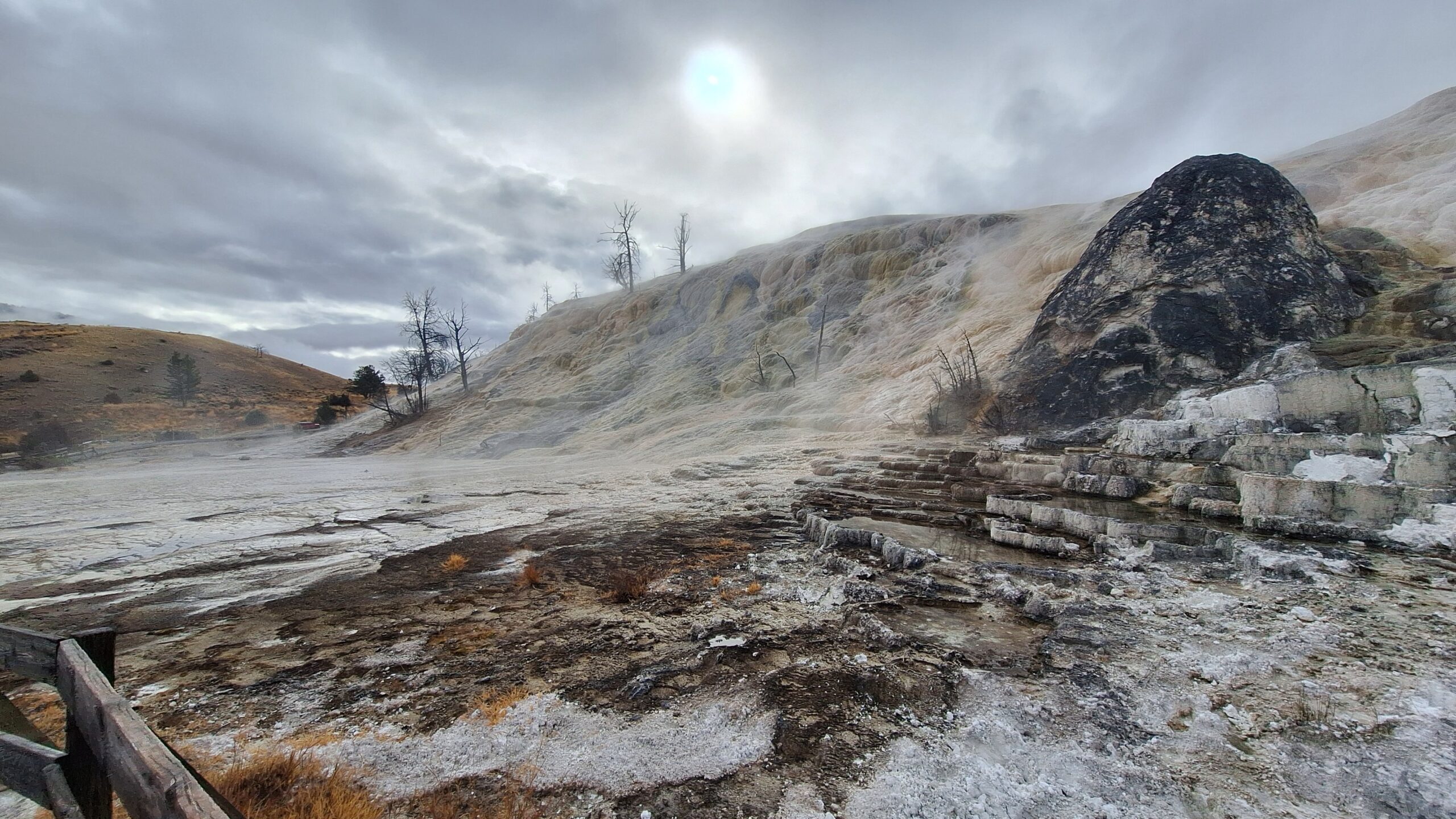Road Trip Thru America’s First National Park
Yellowstone is larger than the states of Rhode Island and Delaware combined. Its location across Wyoming, Montana, and Idaho makes it perfect for road trips.
The road trip through Yellowstone started in Montana, and it was exciting even knowing some roads were closed due to extreme weather. President Ulysses S. Grant established Yellowstone National Park in 1872. It has the distinction of being the first national park in the United States, even if Californians argue the first was Yosemite. Yellowstone is widely considered the first national park in the world.
Planning this “one-day at Yellowstone” as part of a four-day road trip was the start of the adventure. With so many choices, my itinerary was packed with potential: the Grand Canyon of Yellowstone with its thunderous falls, the prismatic hot springs with their vivid hues, the geyser basins, and the wildlife, specifically Bisons.
Did you know Bison have roamed freely in Yellowstone since prehistoric times and are the largest land-dwelling mammals in North America? This herd is genetically pure, meaning it has no cattle genes, which is rare for Bison today.
First Stop: Mammoth Hot Springs
Back to the road trip… the first stop was the Mammoth Hot Springs limestone terraces. These terraces are where the interactions of water and limestone create chalk-white travertine. These hot springs are among the fastest-changing features in the park because they emerge and dry up quickly. Yes, this means in a few years, Mammoth Hot Springs will look quite different than today.
The park’s geology is as fascinating as it is dynamic. At the heart of Yellowstone lies the Yellowstone Caldera, the largest supervolcano on the continent. It has erupted several times over the past two million years, shaping the region’s unique geological features. Today, the caldera’s presence is marked by over 10,000 hydrothermal features, including half of the world’s geysers.
Second Stop: Norris Geyser Basin
The second stop was Norris Geyser Basin, renowned for being the park’s hottest, oldest, and most dynamic thermal area. It boasts the highest temperature recorded in Yellowstone’s geothermal areas, with a scorching 459°F measured just below the surface. The basin is home to Steamboat Geyser, the world’s tallest active geyser, which can erupt 300–400 feet. The unique landscape of Norris Geyser Basin is divided into two sections: Porcelain Basin, known for its treeless terrain and vibrant colors, and Back Basin, which is forested and features scattered thermal attractions.
Third Stop: The Grand Canyon of Yellowstone
My third stop was to fill my soul with the beauty of The Grand Canyon of Yellowstone. This canyon is such a beautiful sight of waterfalls! It truly can take your breath away. With the dramatic Upper and Lower Falls of the Yellowstone River, the canyon offers a stunning spectacle that is both a geological and visual marvel. This unique treasure is continually shaped by the erosive forces of the river, making it a dynamic and ever-changing landscape. The canyon’s walls feature steam vents hinting at the surface’s ongoing hydrothermal activity.
Fourth Stop: The Grand Prismatic Spring
The fourth stop was The Grand Prismatic Spring. It’s the largest hot spring in the United States and the third largest globally, approximately 370 feet in diameter and over 121 feet deep. As I walked on the manufactured trail to avoid tourists from contaminating the hot spring, I learned fascinating facts about this beautiful spot. The vibrant hues of the spring come from microbial mats that flourish in the mineral-rich waters, creating a rainbow of colors that change with the seasons. This extraordinary feature is a feast for the eyes and a hotspot for scientific research, offering insights into microbial life in extreme environments.
Fifth Stop: Old Faithful
The fifth stop on this road trip was for the show everyone wants to see at Yellowstone: Old Faithful Geiser! While I waited for the day’s show, I stopped by the park store and had ice cream, then proceeded to the visitor’s center. I made it just in time to see the last eruption before the park closure. Unlike the shy Steamboat Geiser with its unpredictable eruption schedule, the Old Faithful geyser erupted with punctual grandeur and didn’t fail to fascinate its audience, myself included. 😊
The road trip took about nine hours. After taking over 1000 photos, I continued my night journey to Idaho to rest before the next National Park adventure!
Continue at Craters of the Moon: 3 Reasons to Visit Craters of The Moon – GoTravelHiking
Plan Your Visit – Yellowstone National Park (U.S. National Park Service)









0 Comments